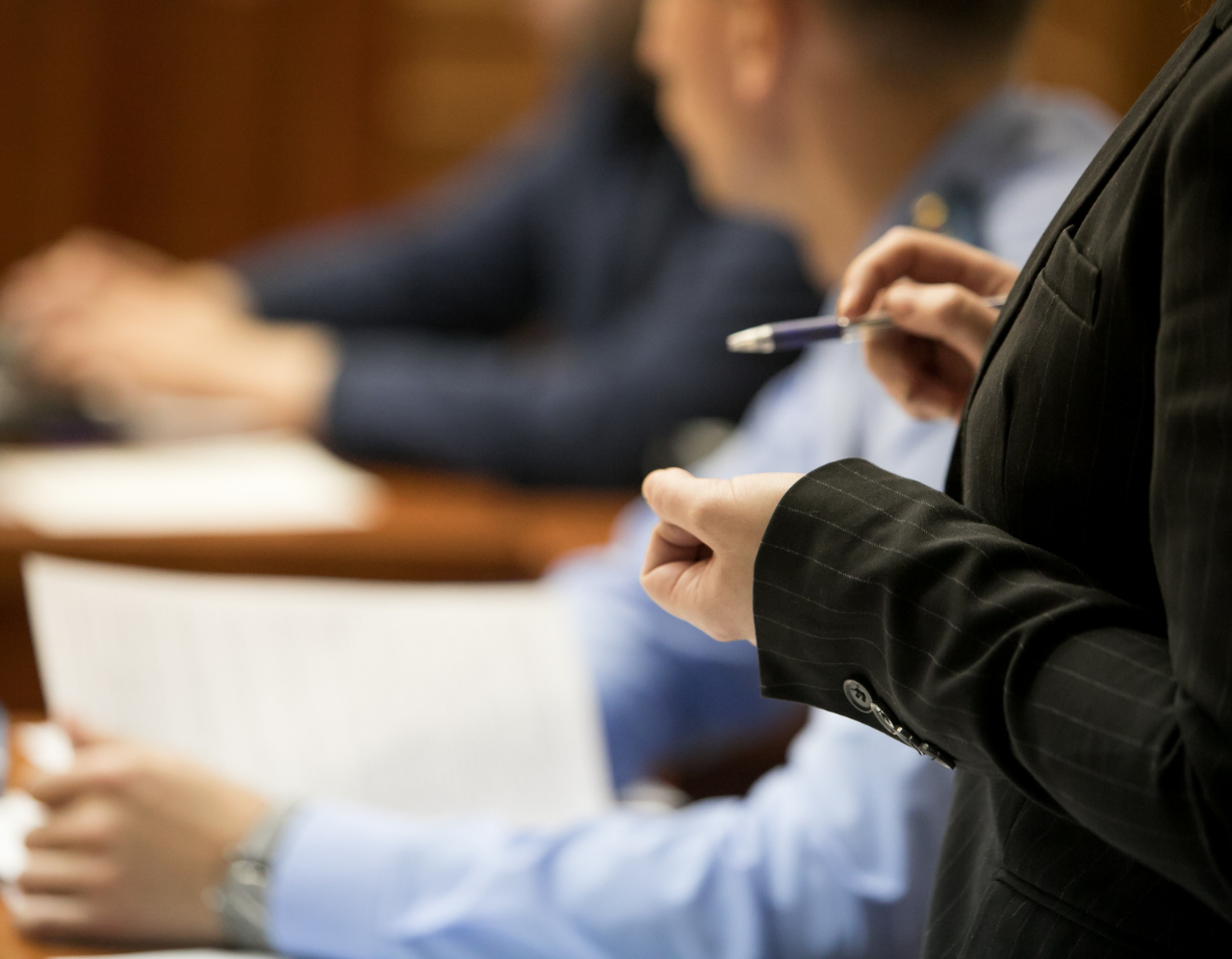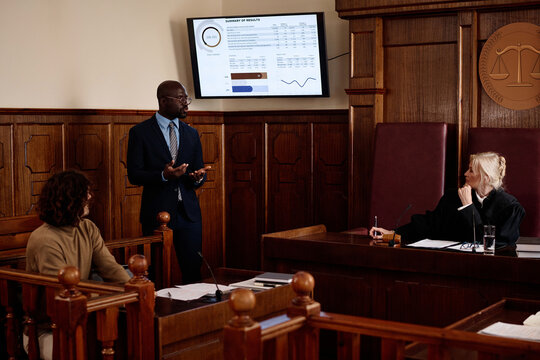The Function of Aesthetic Help in Effective Trial Presentations: An Overview for Lawyer
The Function of Aesthetic Help in Effective Trial Presentations: An Overview for Lawyer
Blog Article
Browsing the Complexities of Test Presentations: Tips for Seamless Shipment and Compelling Disagreements
In the world of legal process, the art of test discussion stands as an essential factor of success. The complexities integral in trial presentations call for a fragile equilibrium of finesse, method, and skill.

Comprehending Trial Objectives
To effectively navigate a trial, it is vital to have a clear understanding of the goals that need to be achieved. Prior to tipping right into the court, lawful groups have to specify their goals and wanted end results. These purposes work as directing concepts throughout the test, forming techniques and influencing decision-making procedures.
Understanding trial objectives involves an extensive analysis of the instance, legal criteria, and the client's benefits. Trial Presentations. It requires a precise examination of the truths, determining essential concerns, and expecting potential difficulties. By establishing specific and quantifiable objectives, lawyers can customize their discussions and arguments to align with the wanted outcomes
Furthermore, a clear understanding of trial objectives enables lawful teams to prioritize proof, witnesses, and legal debates properly. It permits the development of a systematic narrative that resonates with the discretionary, strengthening the overall instance presentation.

Organizing Proof Effectively
Having a clear understanding of trial goals lays the foundation for arranging proof effectively in legal procedures. By straightening the presentation of proof with the desired results of the test, lawful teams can reinforce their arguments and enhance their persuasiveness.
An additional crucial element in arranging evidence successfully is developing a rational flow. Presenting proof in a sequential and coherent fashion can assist build a compelling story that sustains the lawful debates being made. Furthermore, using aesthetic help such as timelines, graphes, or charts can additionally boost the organization of proof and assist in making clear complex connections or sequences of events.
Furthermore, making sure that all proof presented is permissible and pertinent to the situation is essential. Inadmissible or unnecessary proof can diminish the toughness of the debate and possibly hurt the credibility of the here and now event. A precise review and selection procedure should be carried out to consist of just the most impactful additional info and legally audio proof in the trial presentation.
Crafting Convincing Stories
Crafting engaging stories plays a critical function in presenting persuasive debates Continued throughout legal process. When building a story for a test discussion, it is essential to establish a clear storyline that highlights essential factors and attaches them in a meaningful manner. By weaving with each other proof, statement, and legal arguments into a cohesive and persuasive story, lawful professionals can properly support for their clients and raise the chance of a positive end result in the court.
Understanding Aesthetic Help
Effective usage of aesthetic help is crucial to boosting the influence and clarity of trial discussions. Visual aids, when made use of purposefully, have the power to simplify complicated information, strengthen bottom lines, and leave a long-term perception on the judge and court. To master aesthetic aids in trial presentations, it is essential to make certain that they are clear, succinct, and relevant to the disagreements being made.
When integrating aesthetic aids, such as graphes, timelines, photographs, or charts, into a test presentation, it is necessary to maintain them aesthetically appealing yet specialist. The visuals need to enhance the spoken disagreements, offering a graph of the info being talked about without overwhelming the target market with unneeded information.
Moreover, experimenting the aesthetic aids beforehand is imperative to make certain a smooth shipment throughout the trial. Familiarizing oneself with the material, shifts, and timings of each visual aid can help maintain the circulation of the presentation and protect against technical glitches that might arise.
Providing Impactful Closing Arguments
A compelling closing disagreement offers as the culmination of a trial presentation, enveloping the core narrative and encouraging the judge and court towards a desirable decision. Begin by outlining the primary disagreements that support your client's setting, emphasizing why the proof presented throughout the trial sustains your story.
Additionally, including psychological allure can further strengthen your closing argument. Ultimately, a well-crafted closing disagreement ought to leave an enduring perception, engaging the court and court to rule in your client's favor.
Final Thought
In final thought, grasping test presentations includes comprehending goals, organizing evidence, crafting narratives, making use of aesthetic help, and delivering impactful closing arguments. By implementing these strategies efficiently, legal representatives can offer their instance flawlessly and make view it now engaging debates in the court. It is important to navigate the complexities of test discussions with accuracy and skill to achieve success in lawful process.
By lining up the presentation of evidence with the wanted results of the trial, legal groups can enhance their arguments and boost their persuasiveness (Trial Presentations). To understand visual aids in test presentations, it is essential to ensure that they are clear, succinct, and appropriate to the arguments being made
An engaging closing disagreement serves as the end result of a trial presentation, enveloping the core narrative and encouraging the court and jury in the direction of a beneficial decision. Begin by detailing the primary debates that support your customer's setting, emphasizing why the proof presented throughout the test supports your story.In final thought, understanding trial discussions includes recognizing goals, arranging evidence, crafting stories, using aesthetic aids, and supplying impactful closing arguments.
Report this page